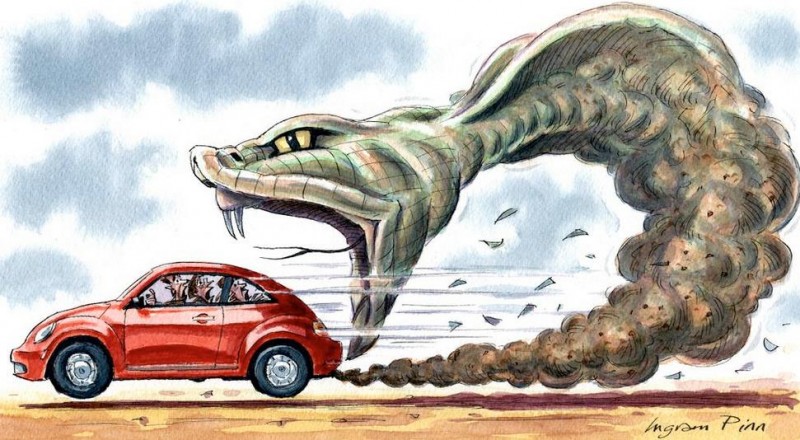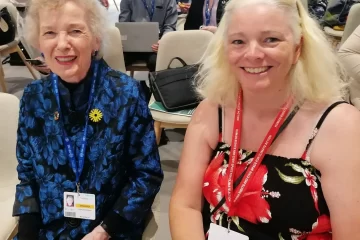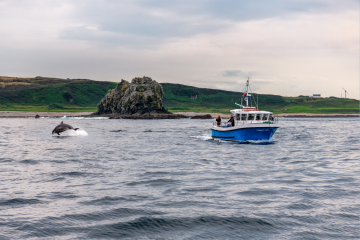‘Our streets are for the people too’

July 22nd, 2019
On Saturday, activists from the Dublin Cycling Campaign, the Irish Pedestrian Network and the Dublin Commuters Coalition, supported by members of Extinction Rebellion, occupied South William Street, declaring it a Clean Air Zone from 10am until 7pm.
The peaceful protest opened this normally highly congested street to pedestrians – particularly important for those with disabilities who struggle to navigate the area’s narrow footpaths – and spontaneously activated a huge amount of street activity including theatre and music performers and children’s art activities.
The groups involved began planning the South William protest following the publication of a report by the Environmental Protection Agency on air quality in Dublin that found high levels of nitrogen dioxide at a number of locations including Pearse Street and Heuston Station.
In addition, air pollution reached unsafe levels twice in the Phoenix Park this year. This is worrying, particularly as it is estimated that four people in Ireland die prematurely every day from illnesses relating to poor air quality.
The advice from the EPA once safe levels of air pollution have been breached is that adults and children with lung problems should avoid strenuous physical activity in such conditions.
Car-free benefits
This is stark and worrying information but the reality is that the pedestrianisation of areas such as South William Street and its surrounds would offer a number of benefits to the city beyond an immediate decrease in dangerous levels of nitrogen dioxide.
Pedestrianised streets are highly permeable, pleasant to wander down, have good surfaces and crossings and make you feel safe when you come into contact with other modes of transport.
Research in New York and the UK suggests that this approach can attract greater numbers of city users and inhabitants who want to live or visit urban areas to experience city life. That sense of the street and culture of people-centred design actually increases footfall in the street space.
The lesson from the occupation of South William Street is that very little is required to activate a street and make it a pleasant place. Due to its location, a stone’s throw from Grafton Street, footfall is already high and many pedestrians confessed to often avoiding the street due to it being filled with idling cars spewing fumes into the faces of passers-by.
Whereas some areas of the city may need programming to keep them active and effective there are a number of prime streets in Dublin’s inner city that could be pedestrianised with minimal cost or disruption.
College Green pedestrian trial
Yesterday, Dublin City Council conducted a pedestrian trial in College Green that aims to return a civic plaza to the city and address the high level of traffic congestion currently experienced there.
Plans to restrict access to this historic space in the city centre have been the subject of lobbying and pressure from private groups and interested parties including car park owners and some transport operators.
In October 2018, An Bord Pleanála refused planning for the project despite concerns for pedestrian and cyclist safety in the area. The Board’s Inspector on Traffic and Transportation questioned the Council’s traffic modelling on the basis of two car trips that he himself had taken.
The Council intend to press on with plans for pedestrianisation. The trial on Sunday was not without its problems and was somewhat more fraught than Saturday’s South William Street takeover.
In contrast to the Saturday event, Dublin City Council sought to provide activities and services to streets users. While this was an excellent intention, it required the provision of health and safety infrastructure in the shape of a large number of metal barriers and the presence of many ‘event’ staff onsite.
The experience of a pedestrian plaza should be based on free access and walkability, an approach made difficult by the set-out of specific routeways and activity zones.
Following feedback from participants, the organisers quickly responded by removing many of the barriers in place improving the experience immeasurably. The trial will run again on the following two Sundays, 28 July and 74 August.
The occupation and opening of South William Street was also not flawless. However, it was based on a simple and effective premise that could aid the progress in pedestrianising College Green – that there are some high use areas of the city that are now dangerously congested and require little intervention other than the restriction of cars. People will do the rest.
Let’s give (some parts) of Dublin back to the people, it’s killing us not to.
By Councillor Neasa Hourigan
Neasa Hourigan is the co-founder of the Irish Pedestrian Network and was elected as a Green Party councillor for Cabra-Glasnevin in 2019. She has a professional background in sustainable communities and was a university lecturer in environmental development and design.







